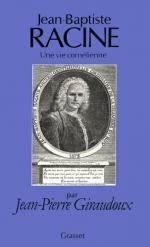|
This section contains 7,082 words (approx. 24 pages at 300 words per page) |

|
SOURCE: "The Dramatic Art of Racine," in Corneille and Racine: Problems of Tragic Form, Cambridge at the University Press, 1973, pp. 216-36.
In the following excerpt, Pocock seeks to demonstrate that "the basis of Racine's art was his concern to express those irrational and even infantile passions that are fed from the unconscious, but that he masked them as far as possible behind a perfect neo-classical façade. "
After 1670, Racine was the reigning monarch of the stage. Bajazet was acclaimed not just as a success but as an improvement on his earlier plays. Mithridate triumphed, and was Louis XIV's favourite tragedy. Then came Iphigénie—Racine's greatest success, with the Court, the Town, and the critics. Until the end of the eighteenth century and beyond, it was regarded as one of his greatest plays—perhaps his greatest. I will consider for a moment these three plays by Racine at...
|
This section contains 7,082 words (approx. 24 pages at 300 words per page) |

|


